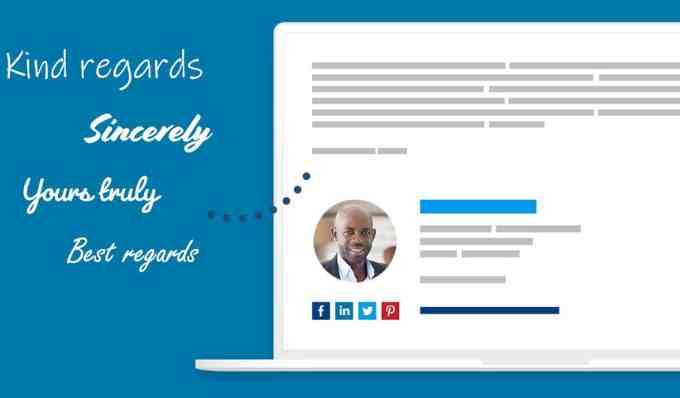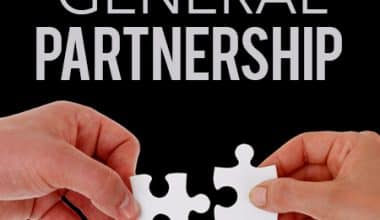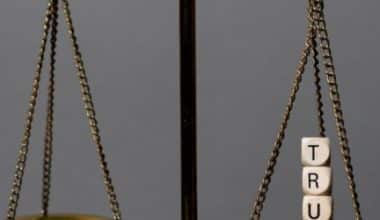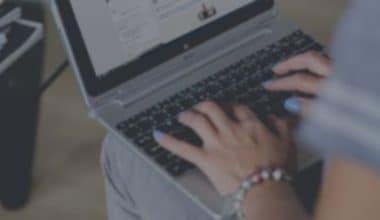Email is one of the most effective, powerful, and affordable marketing and communication tools available. The first impression a person will make of your email is the salutations. Email salutations are significant because they represent your professional demeanor toward the recipient. Your relationship with the recipient will determine the appropriate closing and opening email salutations for your business. There are different kinds of salutations used worldwide but only a few are suitable for email and we will cover that here.
Email Salutations
Email salutations are salutations that appear at the beginning of your email. When writing a salutation, you address the recipient specifically and, most often, by name. Your options for salutations in business letters are restricted to expressions like: “Dear”, “Hello”, and “Best wishes”.
Email Salutations for Business
You can prevent blunders by using the best greetings for different connections and events. For example, you cannot address an A-listed client of your business with “hey there”. That doesn’t sit well, and the email may wind up in spam. Email salutations are one the indicators that validate an email for business. And for that reason, making an effort to make it professional is required. There are many different email salutations you can use for your business, and all of them will be covered here.
#1. When Addressing a Loyal Client
This has to be on the top of the list because it is always taken with great caution. The usual salutation for this type of business email is Dear, followed by the recipient’s name and, occasionally, a title, and it is followed by a colon.
When addressing a cover letter, use Dear. You can also use other titles like:
- Hello, Mrs. Reader
- To Rose:
- Respectfully, Mr. Joseph
#2. Standard Social Letter
Dear, followed by the recipient’s name and, occasionally, a title, is the typical salutation for a more casual business letter or personal letter.
- Hello, Ms. President
- Hello Joseph
- Greetings, Pastor Amor
(Social business letters express gratitude, sorrow, congrats, and other non-business-related feelings.
#3. When Addressing an Unknown Recipient
You may know little or nothing about them. So it is important to keep your professionalism in check. It is always preferable to lean toward a formal salutation if you establish the first contact with someone or don’t know them well. For your formal letter, use the last name and a professional title.
- Dear Mr. Amir,
- Dear Doctor Joseph,
You can only use the recipient’s first name if you know them well.
- Dear Karen:
What if you are writing to an unidentified recipient? Try to find the person’s name if you don’t know it. Use the person’s position as the salutation if you can’t find them.
- Dear Principal,
- Hello Tax Adjuster,
- Dear Parent,
#4. When Addressing more than One Person or a Group
You can address an email to more than one person at a time or a group. If you know their names or title then it is fine. Use the neutral title Ms. if you are unsure about the recipient’s preferred title. List the receiver with the highest corporate status first, and if they are equal in a corporate position, alphabetize the order.
- For more than one woman: Dear, Ms. Smith, Mrs. Gates, and Miss Candice,
- To a woman and a man: Dear Mr. Amir and Ms. Sandra
- To multiple people: Hello Dr. Melody, Mrs. Brady, and Mr. Matthew.
- To a group: Hello [group title]
Hold a business email to the same standards as a letter (i.e. one that is functioning like a business letter, such as a first response to a client inquiry, a sales letter, or a proposal.) Use the following advice when writing less formal emails
#5. When Addressing an Informal Email
End the salutation with a comma rather than a colon, and adjust your tone and salutation to suit your relationship with the recipient:
- Joseph,
- Hi Joseph:
- Hello Ruth
- Good morning, Joseph.
Only address Joseph as “Good morning” if you know he will read this email in the morning. Utilizing Time Salutations, in this post. Observe carefully to learn more.
You can also use slang greetings when your closest colleagues. For hey Samson, or hi Ruth.
You can skip the greeting in casual settings, and you can skip the salutation but still include the recipient’s name in the message’s opening:
- Joseph, you’re right. I forgot.
Tips: Create the ideal salutation.
Using the appropriate salutation while writing any kind of business contact demonstrates your degree of professionalism. No matter the business setting, apply the necessary tone to match your message.
Closing Email Salutations
There are many available salutations that you can use for closing an email. Once again, when selecting salutations for closing an email, you will select one that matches your text.
#1. Email Closings for Official.
Regards
Certainly, it’s a little stuffy, but that’s exactly why it works in business emails—nothing there’s special or unexpected about it.
Truly
Do you have a cover letter to write? The appropriate tone for official correspondence is sincere. Remember that it could sound formal in more informal business emails.
Best wishes
This sign-off is safe since it strikes a decent balance between friendliness and professionalism, but be careful of its greeting-card feel and use it only when it goes well with the tone of your email.
#2. Email Closings for Unofficial Transactions
Cheers
Cheers were regarded as the most likely sign-off (that isn’t a thank-you) to receive an email response in a recent survey by the email program. If your email is casual and conversational, it works well.
Best wishes
Best wishes are expressed in a fun, snappy style. If you receive a lot of emails, you are aware that this sign-off is used by almost everyone. Similar to how regards are smooth in more formal communications, this familiarity makes it so. The disadvantage is that, especially if you want your message to be dynamic and attention-grabbing, it might be safe and boring.
As ever
For those with whom you have a lasting working connection, this is a good option. It reassures your contact that communication between you two is as strong as it has ever been.
#3. Closing Emails for Request
Thanks in advance.
According to a Boomerang study, emails with gratitude get the highest response rate. Maybe it’s because you’re expressing that you’ll be glad when (not if) the person you’re emailing comes through when you use this sign-off, which both shows gratitude and establishes an expectation. Take care where you use it because saying “thank you in advance” can seem too demanding in more professional settings.
Thank you
When you wish to show gratitude, a straightforward “thank you” is also a good option. Nevertheless, just like saying “thank you in advance,” it can also imply expectation. Keep it for when you’re implying, “I expect you to do this,” with real intent.
I Appreciate Your [Help, Insight, Feedback, and So On].
There is never truly a bad time to show gratitude to someone who has assisted you.
Professional Email Salutations
There are several possibilities available if you’re unclear about how to choose a formal email salutation greeting. It’s crucial to know and comprehend your receiver because some are more formal than others. Some of the most popular options for formal salutations are listed below:
#1. “Dear,”
When greeting someone in an email, using the salutation “Dear” is usually polite and appropriate, especially if you are aware of their name. Adding their name makes the conversation more intimate and demonstrates your concern for the client connection. Instead of using “Mr.,” “Miss,” or “Mrs.,” use their first or complete name for a gender-neutral choice.
Another choice is to just refer to them by their last name and title. By doing this, you can show your respect and attention to detail. Ensure that titles like “Captain,” “Professor,” “Parent,” or “Doctor” are written down as well.
#2. “Hello” or “Hi.”
Less formal alternatives of “Dear” are “Hey” or “Hello.” In most cases, you would use “Hey” or “Hello” when addressing a department or sending an email without including your name or other personal information.
You might occasionally have a cordial connection with a customer or supplier. You may say “Hi” or “Hello” as your salutation in this situation. As a mark of respect and sincerity, it is important to include their name in this salutation. For instance, “Hello Joseph” or “Hello Sandra.”
#3. “Greetings,”
The email greeting “Greetings” falls midway between “Dear” and “Hey” or “Hello” in terms of formality. Although it’s still a proper email salutation, it frequently conveys a friendly relationship rather than an official introduction.
“Greetings” is frequently used when cold pitching or cold emailing a new client in order to stand out from the throng. This is always a wise choice if your relationship with the recipient is strained.
#4. Hello Guys.
This circumstance only arises when you are speaking to a crowd. Compared to using gender-specific salutations like “Hi guys,” it is more formal and suitable because it includes everyone in the email.
Tip: Always remember the punctuation mark, they are also important.
How to Locate the Right Contact Information
If you’re sending a first-time email to a prospective employer or client, the more time you spend looking up their name, the better your results will be.
Thankfully, the internet has made it simpler than ever to get this information, but if you can’t find the contact information online, there are alternative ways you may look it up. Here are some pointers for finding the right contact and relevant details.
Most websites display the names of their staff members, or at the very least, the names of high management and decision-makers. Even if you don’t get their formal title, knowing their entire name will help you write the ideal email salutation.
The names of contacts can also be found on professional networking websites. Usually, you can locate the individuals that work for a specific business. Finally, go through each person’s titles until you locate the right contact.
You might be able to locate the appropriate contact by giving the business a straight call. If you phone a call center or administrative assistant, they will usually be able to answer your queries or point you in the right direction.
It’s important to keep in mind that networking is a two-way street if you choose to go through another person to find contact information. Spend some time writing a thank you note or thinking of ways to repay the favor later.
Best Email Salutations
This is a first point of contact, it is advised to use “Hello” or “Dear” and the recipient’s name. The most frequent methods to conclude an email on a kind and professional note are “Warm regards,” “Best wishes,” and “Sincerely.” When choosing a salutation for the closing, consider the email’s tone.
Your email’s opening sets the tone and could have an impact on how the recipient perceives you. Without a greeting, you run the danger of the email or its sender (you) coming across as abrupt, especially if it is your first email.
The following are the best and most commonly used salutations for email:
- Hello {name or title}
- Dear {name or title}
- Hello {name}
- Name
- Hey or Hi
- Good day
- My regards
- Truly
- I appreciate your feedback
- Best,
- All the best,
- Regards,
- Thank you,
- Many thanks,
- Respectfully,
How Do You End a Professional Email Greeting?
Your email’s closure is the final thing the receiver reads. Your email’s conclusion can make an impact on your readers and may even influence how soon they respond or take action. The following are the most typical and proper methods to conclude a business email:
#1. “Sincerely,”
This business closing is a favorite since it works in every circumstance. It communicates to the reader your sincere gratitude for taking the time to read the email and respond to any calls to action you included.
#2. We hope to speak soon.
By using this conclusion, you are expressing your desire for a follow-up discussion or meeting. Use this as your closing statement in cover letters, requests for informational interviews, and emails sent after interviews.
#3. “Thank you for your time,”
Another common closing is to thank the reader for their time in reading the email. Professionals frequently have a ton of emails in their inboxes to read and react to, so letting them know you respect their time can make them feel better about you in their eyes.
How Do You Start a Formal Email Greeting?
- “Dear Sir or Madam”
- “To [insert title]”
- “To Whom It May Concern”
- “Dear Mr./Ms.”
- “Dear [first name]”
- “Hi, [first name]”
- “Hello or Hello, [name]”
- “Greetings”
What Is a Good Email Opening?
A good email opening must contain a warm tone that will enable readers to relax
- I hope you’re well.
- I hope this email finds you well.
- Hope you’re having a great week so far.
- Hope you had a lovely weekend.
- Hope you had a lovely vacation.
- Thanks for letting me know.
- Thanks for reaching out.
- Thanks for getting in touch.
What Can I Say Instead of Kind Regards?
There are other complimentary words
- Sincerely.
- Cordially.
- Many thanks.
- Take care.
- Sending you the best.
- Respectfully.
- Thank you for reading.
- With gratitude.
What Is the Best Polite Way to End an Email?
If I’m asking someone a question or giving them directions for a job, I always say “thank you so much for your time” or “thanks in advance,” according to Camejo Sanchez. “It’s always a good idea to express your gratitude and good wishes!” Examples of appropriate email closings include: Sincerely.
In Conclusion,
In the long run, although email salutations aren’t the only thing that makes an email stand out, however, it is a major criterion people may look into when evaluating your text and may be of help if you want to land a deal.
FAQs
How do you start a formal email first sentence?
- I hope you’re well.
- I hope this email finds you well.
- Hope you’re having a great week so far.
- Hope you had a lovely weekend.
- Hope you had a lovely vacation.
- Thanks for letting me know.
- Thanks for reaching out.
- Thanks for getting in touch.
How to write an introduction?
- Compose an introductory heading that will hook and piques the reader’s interest.
- The background knowledge is pertinent and necessary for the reader.
- Outline a thesis statement outlining your crucial argument or idea.
How do you email professionally?
- Give a suitable salutation.
- Recognize your intention.
- Describe your purpose.
- Be straightforward
- Make it accurate and short.
- Sign off appropriately.
- Create a suitable email signature.
- Proofread.
Related Articles
- EMAIL GREETINGS: Ultimate Guide
- TO WHOM IT MAY CONCERN: All You Should Know!!!
- VIRTUAL PHONE SYSTEMS: The Top Best Virtual Phone Systems For any Business (+ Detailed Guide)
- Visual Voicemail: How Does It Work, And What Are The Benefits?
- OFFICIAL LETTER FORMAT: What are the Best Formats for Any Business






